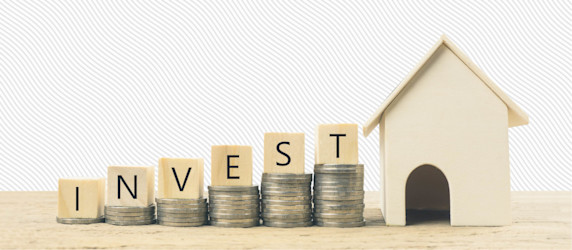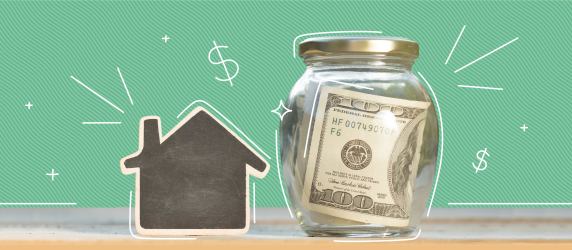Articles

The Best Apartment Search Platforms for 2025
Finding the right apartment requires more than comparing rent prices and browsing photo galleries. The search platform you choose can significantly impact your entire experience, either streamlining your hunt and surfacing quality options or leaving you overwhelmed. But with the countless rental platforms available today, selecting the right one has become a challenge in itself. While some sites offer extensive inventories, they may lack the search functionality needed to narrow down options efficiently. Other platforms have sleek interfaces but struggle with listing accuracy and real-time updates. To help, we've ranked the top rental websites based on their search capabilities, listing quality, and user experience:

The 9 Best Neighborhoods to Live in Washington DC
Moving to or within Washington, District of Columbia? Washington is much more than the White House, prestigious universities, and being the setting of plenty political and alien invasion movies. Here are our top 9 neighborhoods to check out before you sign your lease.

The 11 Best Neighborhoods to Live in Denver
Moving to or within Denver, Colorado? The 'mile-high city' has got a lot more going for it than just its Super Bowl wins. Here are our top 11 neighborhoods to check out before you sign your lease.

The 11 Best Neighborhoods to Live in Austin
Moving to or within Austin, Texas? The 'live music capital of the world' has got a lot going for it. Here are our top 11 neighborhoods to check out before signing your lease.

The 9 Best Neighborhoods to Live in the Bay Area
Moving to or within the Bay Area, California? The Bay Area has got a lot more going for it than just Silicon Valley. Here are our top 9 neighborhoods to check out before you sign your lease.

The 11 Best Neighborhoods to Live in San Antonio
Moving to or within San Antonio, Texas? The seventh largest city in the US has got a lot going for it. Here are the top 11 neighborhoods to check out before you sign a lease.

The 9 Best Neighborhoods to Live in Boston
Moving to or within Boston, Massachusetts? Boston has got a lot more going for it than just impressive colleges and historic-rich areas. Here are our top 9 neighborhoods to check out before you sign your lease.

The 9 Best Neighborhoods to Live in Los Angeles
Moving to or within Los Angeles, California? Los Angeles is much more than beaches, Hollywood stars and sunny weather. Here are our top 9 neighborhoods to check out before you sign your lease.

The 9 Best Neighborhoods to Live in Miami
Moving to or within Miami, Florida? Miami is much more than beaches, NFT fanatics and golf courses. Here are our top 9 neighborhoods to check out before you sign your lease.

The 9 Best Neighborhoods to Live in New York City
Moving to or within New York City, New York? New York City is much more than Wall Street, Broadway, and Bodegas. Here are our top 9 neighborhoods to check out before you sign your lease.

The 11 Best Neighborhoods to Live in Dallas
Moving to or within Dallas-Fort Worth, Texas? If the city of sports is in your game plan, take a look at our top 11 neighborhoods to check out before you sign your lease.

The 9 Best Neighborhoods to Live in Chicago
Moving to or within Chicago, Illinois? Chicago is much more than its windy weather, Cubs and Bulls fans and the birthplace of a unique style of pizza. Here are our top 9 neighborhoods to check out before you sign your lease.

The 9 Best Neighborhoods to Live in Atlanta
Moving to or within Atlanta, Georgia? Atlanta is much more than rap music, Coca-Cola HQs, and Falcons. Here are our top 9 neighborhoods to check out before you sign your lease.

The 9 Best Neighborhoods to Live in Baltimore
Moving to or within Baltimore, Maryland? Baltimore is much more than seafood, Michael Phelps and the Washington museum. Here are our top 9 neighborhoods to check out before you sign your lease.

The 9 Best Neighborhoods to Live in Phoenix
Moving to or within Phoenix, Arizona? Phoenix is much more than sunshine, golf, and deserts full of cacti. Here are our top 9 neighborhoods to check out before you sign your lease.

The 9 Best Neighborhoods to Live in Portland
Moving to or within Portland, Oregon? Portland is much more than its award-winning beer, delicious coffee, and its famous environmentally-friendly vibes. Here are our top 9 neighborhoods to check out before you sign your lease.

The 9 Best Neighborhoods to Live in Orange County
Moving to or within Orange County, California? Orange County is much more than its pristine beaches, world-famous Disneyland, and its famous surf culture. Here are our top 9 neighborhoods to check out before you sign your lease.

The 9 Best Neighborhoods to Live in Philadelphia
Moving to or within Philadelphia, Pennsylvania? Philadelphia is much more than the Liberty Bell, the eight sequels of Rocky, and its festive Mummers Parade. Here are our top 9 neighborhoods to check out before you sign your lease.

The 9 Best Neighborhoods to Live in San Diego
Moving to or within San Diego, California? San Diego is much more than its pristine beaches, amazing all-year-round weather, and its famous Zoo. Here are our top 9 neighborhoods to check out before you sign your lease.

The 9 Best Neighborhoods to Live in Seattle
Moving to or within Seattle, Washington? Seattle is much more than great coffee, the Seahawks, and the Space Needle. Here are our top 9 neighborhoods to check out before you sign your lease.

Bungalow Q3 2022 U.S. Room Rent Report
Introduction Bungalow is the leading, full service platform for renters that is available in 21 major markets in the U.S. Bungalow has created a modern, seamless, and fully digital rental solution for both renters and property owners/managers. Renters love and trust Bungalow because of the flexible lease terms, affordable rent in great neighborhoods, roommate vetting, furnished shared living spaces, in-app payments, maintenance, and utility management. Property owners, managers, and investors love Bungalow because the platform helps maximize return on rental investments, fill vacancies fast, and minimize the stress of rental management. Bungalow is focused on solving the housing supply constraints in the U.S. and helping renters find the best, affordable room rentals in the country. While many prop tech companies track the cost of rent for studio/one bedroom, two bedroom and whole home rentals, over the last five years Bungalow has become the most comprehensive resource for roommate sharing rental listing data. Shared living of all kinds has risen quickly in popularity over the past several years, and continues to do so at unprecedented rates, making rental data at the room level more valuable than ever before. Starting in 2022, Bungalow began releasing quarterly Room Rent Reports to provide renters and property owners an additional layer of industry knowledge - at the room level - to help them make informed rental decisions. Follow these links to find the Q1 2022 Room Rent Report and the Q2 2022 Room Rent Report. Below is the latest room rent analysis from Bungalow’s Q3 Room Rent Report. As Bungalow expands into new markets, additional cities will be added.

Bungalow Q3 Launch Update
Bungalow’s mission is to provide access to quality housing to all. This mission is more important now than ever with increasing rents and decreasing housing supply. We remain focused on how to improve the experience of our thousands of renters every day, and we are excited to share some of the highlights of launches improving our residents’ experiences in Q3 2022.

Bungalow Q2 2022 U.S. Room Rent Report
Introduction Bungalow is the leading, full service tech platform for renters that is available in 21 major markets in the U.S. Bungalow has created a modern, seamless, and fully digital rental solution for both renters and property owners/managers. Renters love and trust Bungalow because of the flexible lease terms, affordable rent in great neighborhoods, roommate vetting, furnished shared living spaces, in-app payments, maintenance, and utility management. Property owners, managers, and investors love Bungalow because the platform helps maximize return on rental investments, fill vacancies fast, and minimize the stress of rental management. Bungalow is focused on solving the housing supply constraints in the U.S. and helping renters find the best, affordable room rentals in the country. While many prop tech companies track the cost of rent for studio/one bedroom, two bedroom and whole home rentals, over the last five years Bungalow has become the most comprehensive resource for roommate sharing rental listing. Shared living of all kinds has risen quickly in popularity over the past several years and continues to do so at unprecedented rates, making rental data at the room level more valuable than ever before. Starting in 2022, Bungalow began releasing quarterly Room Rent Reports to provide renters and property owners an additional layer of industry knowledge - at the room level - to help them make informed rental decisions. The quarterly reports began with a Q1 2022 retrospective, and below is 2022 Q2 data. As Bungalow expands into new markets, additional cities will be added to this quarterly Room Rent Report.

Bungalow Q1 2022 U.S. Room Rent Report
Introduction Bungalow is the leading, full service tech platform for renters that is available in 21 major markets in the U.S. Bungalow has created a modern, seamless, and fully digital rental solution for both renters and property owners/managers. Renters love and trust Bungalow because of the flexible lease terms, affordable rent in great neighborhoods, roommate vetting, furnished shared living spaces, in-app payments, maintenance, and utility management. Property owners, managers, and investors love Bungalow because the platform helps maximize return on rental investments, fill vacancies fast, and minimize the stress of rental management. Bungalow is focused on solving the housing supply constraints in the U.S. and helping renters find the best, affordable room rentals in the country. While many prop tech companies track the cost of rent for studio/one bedroom, two bedroom and whole home rentals, over the last five years Bungalow has become the most comprehensive resource for roommate sharing rental listing. Popularity in roommate living has risen quickly in the past few years, especially as the world recovers from Covid and the industry continues to feel the effects of macro issues like: US is short ~ 3.8m housing units Home prices have risen 19%, and are expected to rise ~6% this year Millennials have 20% less wealth than their parents did at the same age Rents continue to climb across the U.S. The median rental rate hit new highs in the U.S. for the 14th consecutive month, according to a recent report Starting in 2022, Bungalow began releasing quarterly Room Rent Reports to provide renters and property owners an additional layer of industry knowledge - at the room level - to help them make informed rental decisions. The quarterly reports began with a Q1 2022 retrospective, and below is 2022 Q2 data. As Bungalow expands into new markets, additional cities will be added to this quarterly Room Rent Report.

Breaking down the BRRRR method for real estate Investing
BRRRR is an investing strategy that stands for “Buy, Rehab, Rent, Refinance, Repeat.” This method targets distressed properties and off market properties properties such as foreclosures or homes up for auction. The idea is to snag properties at a low price, flip them into rental properties, and quickly refinance to fund another purchase.

What to consider before multifamily investing
So you’re ready to expand your investment portfolio. If you’re interested in investing in real estate, multifamily homes are a great way to get into investment properties. As with all investment opportunities, it’s important to consider the potential risks and rewards.

Off market properties: What are they and how to buy
The housing market in many US cities is red hot. Fueled by low mortgage rates and a shift towards remote work, cities such as Las Vegas, Nashville, Phoenix, and Austin, have housing markets that have more demand than inventory in many cases. Because of the intense competition to find housing in many cities, investing in real estate isn’t as easy as going to the MLS and picking what you want. These days, real estate investors must get creative, and in many cases that means looking for off market deals.

Questions to ask a property manager before you hire
As an owner renting out your investment property to tenants, you may choose to manage the property yourself—handling property maintenance, collecting monthly rent, advertising and filling vacancies, and much more. However, you may choose to hire an outside property manager, either an individual or a property management company who will handle much of—if not all of—the property management tasks on your behalf. You’ll have to pay them to do this work, of course, but you may find that the relief of having someone (or a team of people) manage your rental property is well worth the cost of hiring them. Plus, professional property management is one rental property tax deduction you can benefit from to make the most of your investment.

A guide to real estate asset classes, property types, and property classes
An asset class is a collection of investment types with similar characteristics that behave similarly in the marketplace. They are broken down into traditional and alternative investment types. Equities (stock market and bonds), fixed-income investments, and cash and cash equivalents are all traditional asset classes. Alternative investments include real estate, private equity or venture capital, start-up companies, art and antiques, films, and commodities, to name a few. Real estate is the most common alt investment, especially for those new to investing. The real estate industry breaks down the asset class into property types and property classes so that investors can compare different potential investment properties more efficiently.

What is net present value?
Imagine you could afford to buy a home or a multifamily property. Before signing up for a mortgage and spending your cash, you’d want to know if that purchase would pay off down the line. Net present value is a formula you can use to see how much you should spend on a building (or business) and if it will generate future cash flows. A positive NPV suggests a profitable investment that’s worth the upfront cost. A negative NPV implies future loss, which is a red flag for investors.

Get to know closing costs before you buy a home
If you’re interested in buying an investment property, there are a few costs you should know about beforehand that aren’t included in your down payment. It’s essential to include closing costs—which include taxes, insurance, and various fees—in your budget from the beginning of your property search.

Pro forma in real estate and how to calculate
“Pro forma” is Latin in origin, and its literal translation is “as a matter of form or formality.” In law, pro forma refers to the formal proceedings in place to move the legal process forward. In business applications, it describes both the pro forma process or a pro forma financial document (sometimes called a pro forma invoice), which predicts future income and expenses. In real estate, pro forma analysis can help guide your decision whether or not to invest in a property by projecting how the property will perform financially for the long term. Here’s an easy way to remember how pro forma calculations apply to real estate investment decisions: pro forma = performance.

Is buying a house with cash right for you?
When most people refer to buying with cash, they mean buying a house in full with their own funds (not a loan), typically via a wire transfer or cashier’s check (not actual paper bills). Buying a house with cash has certain advantages—like saving on interest and owning the house outright and debt-free; as well as disadvantages—like missing out on mortgage tax deductions. If you’re thinking about making a cash offer on a house, here’s what you need to know about the advantages and disadvantages.

The SF rental market is in flux—here’s what you need to know
The highly mobile, so-called “untethered” population in San Francisco responded to the effects of the Covid-19 pandemic with their feet. In 2020, like the residents of other densely packed urban centers, they left for the perceived safety of suburbs, rural outposts, and family homes. Moving tools and resources company MyMove analyzed data from the U.S Postal Service which showed that between February 1 and July 31, 2020, there were more than 27,000 change-of-address forms filed for households moving from San Francisco. Those who chose to stay were given the boon of unprecedented rental inventory and the lowest rental prices in San Francisco in years. According to Bungalow’s COVID rent trends analysis, rents bottomed out in August 2020, when the average price per room sank 4.2% compared to the previous month. After what looked like the beginnings of a rally, it dropped again in November, down 3.3% from the month before. Putting this in some pricing perspective, the median rent for a studio apartment dropped 35% in November 2020 from the month before, to $2,000, while the cost for a one-bedroom was down 27% to $2,716, according to Realtor.com. But fueled by increasing vaccine-related optimism, prices in the rental market are on the way back up. In May of 2021, the price per room stayed essentially on par with the month prior and rose 1.7% from the month before in June. But do these rising rental prices point to a rebound?

8 Fun things to do at home
With a little bit of creativity, home can become a great place to entertain friends or have a mellow night in. From hosting game night to doing home improvement projects, here are eight activities you can do with roommates, friends, or solo.

How to do the final walkthrough before you close on a home
Before you close on a home, there’s one last important step you need to complete—a final walkthrough of the property. The final walkthrough helps you avoid any surprises, such as having to handle a repair you’d already negotiated with the seller to fix. It’s also your last chance to flag any issues with the interior and exterior of the property.

What is future value?
A crucial aspect of investing is attempting to predict, to the extent you can, how much an investment will be worth after a period of time. This is known as future value. The essential idea is this: Future value (FV) is the expected value of an asset based on its assumed rate of return for the duration of the investment period. FV is helpful for calculating the growth of predictable investments, like when a return is based on a simple interest rate (when interest is calculated based on the initial principal amount), or compound interest (when interest is applied at specific times to both the initial amount and to accumulated interest from previous periods). Keep in mind, of course, that economic factors like inflation can change the value of money over time, so the future value formula is not always an exact science. A good financial formula doesn’t eliminate the risks inherent in investing, but along with other tools in your arsenal, the future value calculation can help you understand the potential ROI of an investment property.

NYC rental market on the upswing as lease signings pick up
It’s been called The Great Migration of 2020: As the Covid-19 pandemic intensified in the spring of 2020, more and more people left densely packed urban areas for family homes, suburbs, and rural outposts. In Manhattan, the vacancy rate had jumped to a 14-year high of 3.67% by July 2020. As recently as April 2021, the Manhattan rental unit vacancy rate was 11.6%. On the other hand, while moves from large cities were often permanent, many relocations from New York City were temporary, and the city is on the upswing. Those who stayed or are returning are prioritizing amenities like apartment gyms, roof decks, and additional space. According to a Bungalow Covid rent trends analysis, rents in New York City began softening in July 2019, reaching their bottom in November 2020, when the average rent price per room sank 5.9% compared to the month before. Prior to the summer of 2019, rents had increased steadily for two years, according to market report data by Douglas Elliman and appraisal firm Miller Samuel.

What is LTV in real estate and how does it impact your mortgage?
When taking out a mortgage to buy a home, it’s important to know the risks. Defaulting on a mortgage can mean damaging your credit score and having your house repossessed, so it’s crucial to determine if you can handle it financially or recoup your expenses if you sell. In real estate, there are many different metrics both buyers and lenders can use to determine whether a mortgage is safe or risky, and one of these is the Loan-to-Value ratio (LTV), which compares the mortgage amount to the estimated value of the property. While LTV is good for you as a home buyer to calculate on your own—especially if you plan to refinance your home loan—it’s also a tool in the mortgage underwriting process that helps determine whether you’re eligible for a mortgage loan and how risky your loan will be. If a loan covers close to the entire appraised value of the property (meaning it carries a higher LTV), it may be seen as more likely to default—that is, the borrower won’t be able to make payments or sell to recoup expenses.

What is a bungalow? All about this housing type
So you’re looking at properties in the housing market and you keep stumbling across the word bungalow. It sounds cute, but what does this housing term actually mean? Read on to learn the defining characteristics and origins of bungalow homes, as well as the advantages of living in one.

What is mortgage amortization?
When you’re considering taking out a mortgage, you must understand its repayment terms. Most loans come with a loan principal amount (the money you originally agreed to pay back) and interest (the cost of borrowing the principal). What distinguishes repayment terms among loans is the balance of principal to interest.

7 Ways to get into real estate investing
Buying rental property has become a popular investment strategy in recent years. With the rise of fast-growing real estate markets around the country and a mobile workforce relocating at record rates, rental real estate can be a solid investment tool. It’s also a tangible asset that seems likely (but not guaranteed) to appreciate over time as the sale prices of homes in the U.S. continue to climb steadily. But buying a rental property isn’t the only way to get into the real estate market. From EITs to real estate mutual funds, there are multiple ways of getting in on real estate. Here are a few ways to invest, along with the special considerations you’ll want to make for each.

The pros and cons of renting vs. selling your home
If you own a home that you no longer want to live in, you have a choice: sell or rent it out. To decide on the right path for you, you’ll want to consider the housing market as well as your appetite for becoming a landlord—a job that comes with many responsibilities.

What are alternative investments?
If you’re looking for ways to invest beyond the stock market, you have options. Real estate investing is considered an alternative investment category, and it’s an alternative investment category that is easier to get into than, say, rare collectibles or hedge funds. Many types of alternative investments are high-risk, high-reward, and not for the beginner. Even if you are an experienced investor, it’s essential to weigh the pros and cons of getting into each type of alt investment.

6 responsibilities of a building super
A building superintendent—also known as a super, property manager, or resident manager—oversees maintenance and repairs for a residential building that typically houses 10 or more units. As a landlord, it helps to have someone on-site for general maintenance and upkeep, and to tackle minor repairs. An on-site super can also be a selling point when marketing your property to tenants. In smaller buildings, a building super handles maintenance and repairs. In a larger building with more robust staff, the super may take on more of a building manager role. Properties with a certain number of rental units are required to hire a super, and rules vary by location—in New York City, for instance, buildings with 10 units or more must have a janitor or super who lives on site or within a block, and is reachable 24 hours a day. A live-in super may occupy the ground level of the building or a basement apartment rent-free or for a reduced rate. (He or she may also receive a salary, or wage, besides housing.) If the super doesn’t live in the building, he will likely live close by—in New York City, he must live within one block or 200 feet from the building.

The pros and cons of utilities included in rent
There are several possible landlord/tenant arrangements for utility costs: Tenant pays for all utilities. Landlord pays for all utilities. Landlord pays for some utilities (like trash) and tenants pay for the rest. When landlords pay for utilities, they’re (usually) not underwriting the cost. Rather, the landlord typically calculates an average monthly cost of utilities for a unit and bundles that into the rent the tenant pays. In this approach, determining utility costs is an essential part of calculating what to charge for monthly rent.

6 Steps to Prepare Your House to Rent
As a homeowner, there will likely come a day when you’re ready to move on—and you have to decide between renting and selling your home. Or, you may own investment property that you intended to rent out in the first place. In any case, here’s what you need to do to prepare your property for the rental market.

What is ARV (after repair value) and how do you calculate it?
Imagine: You’re eyeing a fixer-upper. The neighborhood is great, the property is charming. But the house needs extensive repairs. How do you know if they’ll pay off? That’s where after repair value, or ARV, comes in. ARV tells real estate investors the value of a potential investment property after repairs. To calculate it, you’ll factor in local market conditions and the costs of repairing the home.

Everything you need to know about property maintenance
Once you’ve made a real estate investment, the work doesn’t end—especially if you intend to rent out your property. Managing and maintaining your property is a huge responsibility, and it’s essential to do it right. Proper property maintenance keeps tenants happy and protects your investment long-term, ensuring that the property is in good shape should you ever decide to sell. You could handle the maintenance yourself, but depending on the size of the property and the scope of the maintenance, it may be worth it to outsource to a professional property manager.

The 10 most affordable cities in the US
The workplace in America is changing as we experience what some are calling the largest remote work experiment in history. Many workers are no longer tethered to the densely packed, expensive cities where their companies were headquartered and are looking at real estate in cities they might not have considered before. Even companies are seeking incentives to improve quality of life for their employees. Case in point: In the last year alone, 154 companies announced plans to relocate to or expand in Austin, Texas (one of the cities on our list, below), including Tesla, Samsung, Charles Schwab, and Apple. Gauging a city’s affordability is a personal decision. For instance, you can measure metrics such as the median household income in a metro area, the median home value (we used recent statistics by Zillow), median rent (our source: RentCafe), as well as state and local income tax rates, and the cost of living index (a metric that determines your local buying power relative to the national average in home purchase price, rent, utilities, food, and transit). But you’ll also want to look at some less tangible, more subjective features of that city: Are there cultural, sports, or natural surroundings that are important to you? Here are 10 of the most affordable cities in America. City population data comes from the 2019 US Census; cost of living from Numbeo’s index; median home price from Zillow; and average rent from RentCafe.

What is net operating income in real estate?
Net operating income (NOI) is a real estate term representing a property’s gross operating income, minus its operating expenses. Calculated annually, it is useful for estimating the revenue potential of an investment property. NOI is not affected by how you finance a property—whether you get a mortgage or buy with all cash.

3 Property valuation methods real estate investors should know
A critical skill in real estate investing is property valuation, or the ability to discern the worth of your property based on data. Even if two properties are similar in price or outward appearance, digging into their future potential can ensure you get more for your money.

A room-by-room guide to apartment essentials
You’ve signed the lease on your first apartment—congratulations! Whether you’re moving out of your parents’ house for the first time, or are transitioning from dorm living, getting your own place is an exciting (and eagerly anticipated) rite of passage. After all, both the thrilling freedoms and the daunting responsibilities of living on your own is what adulting is all about. You’ve probably already been thinking about some of the fun items you’ll need to buy (like a cozy reading chair, or the wall art you can’t wait to hang), but don’t forget to take stock of the day-to-day items like towels and toilet paper. If you’re moving in with roommates, check with them to see what they already have for the common spaces. If you’re moving into your own place, you’ll need to stock up on supplies yourself. Read on for a list of essentials for every room of your apartment.

5 Useful tips for buying your first investment property
Buying a home is quintessential to the American Dream for good reason. Investing in real estate has historically been a way to generate wealth over the long term. But owning a home for you and your family isn’t the only way to get into real estate. You can also consider an investment property.

Guide to how to find a property manager
When it comes to managing your rental property—from filling vacancies to collecting rent on time to dealing with day-to-day property maintenance and beyond—you may find yourself overwhelmed with all there is to do as a real estate investor-turned-landlord. One way to make things easier is to hire a property manager. We’ve rounded up everything you need to know to search for the right property manager for your investment property needs.

10 Ways tenants can show proof of income and why it’s important
As a landlord, it’s essential to make proof of income a requirement for any prospective tenant applying to move into your rental. It will help you verify that the prospect has a steady source of income, which in turn means they’re more likely to pay rent in full and on time. How can you verify an applicant’s income? Pay stubs are the most common proof of income document, but there are plenty of other documents a prospective tenant can provide—and you may want to ask for more than one.

Want to be a landlord? These are your top 5 responsibilities
A good tenant-landlord relationship is essential to running a successful rental property. Both renters and the property owners need a clear understanding of a landlord’s obligations. Hiring a property manager can make real estate investing a less arduous venture, but if you prefer to DIY, read on to learn what’s involved in being a landlord.

The 15 fastest-growing cities in the US
The first results of the 2020 U.S. Census show that more than 331 million people now live in the U.S., and the trend among American moves is toward the West and South. The country’s growth rates since the 2010 census was 7.4%—the second slowest in U.S. history, according to the Census. Among all 50 states, 37 grew more slowly in 2010 than in the previous decade. In fact, the constitutionally mandated reapportionment of members of Congress reallocated seven seats across various states based on the 2020 census—tellingly, the first-ever loss of a seat for California. But certain areas, notably the Sun Belt regions of the South and West, are growing quickly. The population in the South has grown 10.2% since 2010, with the West growing at 9.2%. The Northeast grew more slowly, at 4.1%, and the Midwest grew at a rate of 3.1%. The Brookings Institution points out that those Sun Belt states now comprise 62% of the nation’s population. In 1970, less than half (48%) of the country’s population lived in the South and West. Texas has seen huge growth in recent years, as companies move their headquarters from states like California. Arizona, Utah, and Tennessee are among the states with fast-growing cities. The Census Bureau reported in 2020 the cities with the highest average growth over the decade, based on 2019 census results. And while some analyses of US cities measure growth by factors such as employment rates, income, GDP, and poverty rate, here we show you the decade’s growth as defined by percent increase in population.

A Beginner’s Guide to Calculating ROI on an Investment Property
Lots of people look at property as an investment opportunity because it will hopefully grow in value over the years. If you’re buying an investment property to rent, you’re not only hoping the value of that property increases with time, you’re planning to make a profit by renting it out, too. Before real estate investors dive into a purchase, however, they usually assess the property’s potential Return on Investment, or ROI. ROI tells you how much profit you can expect to make in rental income over the long term. It’s expressed as a percentage of the cost of the investment, and you can figure it out by using a fairly straightforward formula.

5 Best places to invest in real estate in 2021
As the COVID-19 pandemic unfolded, leaving many in dire financial straits, the real estate market boomed, making homeowners and real estate investors the beneficiaries in strained economic conditions. In fact, homeowners with mortgages saw their equity increase by a collective $1 trillion in the United States between September 2019 and September 2021, according to CoreLogic. The S&P CoreLogic Case-Shiller National Home Price NSA Index, which tracks price changes of single-family homes, showed that as of November 2020, housing prices had risen 9.5% from the previous year. At the end of 2020, the average home was worth $245,000. According to the National Association of Realtors, that number had increased to $295,300 by June of 2021. The pandemic affected both the supply and demand for housing. Mortgage rates plummeted, decreasing the cost of borrowing money to buy a house, and increasing demand. An improved economy and a generation of millennials who entered their homebuying years and were able to work from home further increased that demand. Through it all, the Federal Reserve has continued to support the housing market by buying $40 billion in mortgage-backed securities every month. The supply of available homes decreased as many buyers—who were now more mobile than ever—snapped up homes in less crowded, suburban areas. Meanwhile, people who would otherwise have listed their homes held onto them or took them off the market. Renters have migrated to the suburbs looking for less densely populated multifamily communities. And so have businesses. Major employers expanded to states like Texas from higher-priced states like California (notably Tesla, Apple, and Samsung). Moves across the country have created some market booms for cities like Raleigh-Durham, Austin, Boise, and Phoenix, where there are good business climates, job growth, educated workforces, and affordability as people relocate from populated city centers like San Francisco, Los Angeles, and New York City. All this has translated into some markets in which buying single-family housing, multi-unit housing, or single-family housing that’s suitable for roommates is a solid investment. As long as the inventory of homes for sale is low, the rental market demand will continue to increase, making investment properties attractive. According to the Census Bureau, in the third quarter of 2020, single-family rentals had an average 95.3% occupancy rating. But as always, real estate is a local investment, so if you’re jumping into the real estate investment market, you’ll need to thoroughly research the best places to invest now. When you’re evaluating a real estate market for potential investment, you should develop a set of criteria for acquiring rental properties. Here are 5 things to consider. Job growth: As some cities have benefited from the moves of large corporations—and others have encouraged the moves with tax incentives and other breaks—the job prospects in some cities have grown. A recent study by WalletHub determined the best cities for jobs for 2021 by evaluating some key metrics, including employment growth and unemployment rates. Population growth and rental occupancy rates: Naturally, strong population growth—particularly into areas where rental occupancy rates are already high—increases your likelihood of renting out faster and for better rates. You can find vacancy and occupancy rates on sites like Zillow Research. Remember, vacancy rates can vary from neighborhood to neighborhood, so drill as far as you can into the local area’s number. Affordability and cost of living: Gauging a city’s affordability involves a number of metrics, including median home prices, median rent, state and local income tax rates, and the cost of living index, a metric that determines your local buying power relative to the national average in purchase price, rent, utilities, food, and transit. Potential appreciation: As you consider a real estate investment in any market, you’ll want to estimate the property’s potential to generate rental income, which you can do by comparing the rental histories of similar nearby properties. It’s also useful to consider the potential future value of the real estate; for instance, if a property isn’t clearing a lot on rent but its value is appreciating, it might still be a good buy. Potential income: You’ll want to estimate your potential income from a property purchase to assess whether it’s a good investment. You can make that calculation by taking the revenue minus expenses (income) and dividing that by the cap rate—or the annual rate of return an investment property is expected to generate. A good cap rate is generally considered to be 10%. Remember that the best move is to think holistically about a market. Are there cultural or sports attractions, walkability, or lots of urban parks that would make a city even more desirable? What kinds of infrastructure investments are being made in the location, and what are the city or community plans? Every year the Urban Land Institute and global consulting and tax firm PwC look at the top housing markets for the coming year in their Emerging Trends in Real Estate report, which considers not only important factors like economic and financial issues but also sociopolitical issues, and real estate and development—as well as real estate industry disruptors.

Contingent vs. pending—what’s the difference?
When you’re on the hunt to buy a rental property, you may come across a property whose status is sale pending, contingent, active contingent, or active under contract—leaving you wondering if you still have a chance to make an offer. In real estate, contingent sales and pending sales are two terms related to properties that are in the process of being sold but aren’t final yet. The most important thing to know is: You can still make an offer on a home under a contingent sale.

How much do property managers charge?
Once you’re ready to rent out your investment property, you may want to consider hiring a professional property manager to manage it. By hiring a property management company, you can delegate a variety of the landlord responsibilities that come with property and tenant management to expert rental property managers. The most important things to consider when deciding whether or not to hire a property manager for your residential property are your budget and the value of your time. Is it worth the spend to have a property manager take care of the ins and outs of managing a rental property for you, or do you prefer to DIY and keep the cash? Read on to find out if hiring a property manager is right for your investment property.

Small bedroom ideas to get the most out of your space
A small bedroom isn’t a bad thing—it just requires a little creativity to make the most of it. Read on for six tips on how to be your own interior decorator and make your bedroom feel more spacious, organized, and functional.

How to get your security deposit refund from your landlord
A key step in moving out of a rental unit is getting your security deposit back from your landlord. To make sure the process goes smoothly between you and your landlord, plan ahead and look into the local real estate tenant law. That way you will know all the specifics of what the refund process will entail in your area.

8 Tips for organizing a small closet
When you’re moving into a new apartment, especially one without extra space for storage outside your unit, your closets will have to do double duty—or for micro apartments, triple duty. Closet storage is important for daily tasks such as accessing clothing and pantry items, and if you’re using your closets for longer-term storage, organization ideas can make your life much easier. Whether you’ve scored a walk-in closet or you’re contending with a small closet, here’s how to maximize your closet space.

What you need to know about rental property depreciation
Owning a rental property can offer a host of financial advantages and rental property tax reductions. When the property is rented, it provides a steady flow of income. The tax owed on rental income can be lowered by deductions for costs such as insurance, property taxes, and property maintenance. And real estate tends to gain value, meaning you might be able to sell for a profit. There’s one more plus: depreciation, which reduces the tax bill of the investor for the life of the property.

CMAs, Explained: What they are and how they’re done
Whether you plan on selling your home or purchasing one, you’ll soon start noticing other homes in the neighborhood. If you’ve done this, you’ve already intuitively grasped the core idea of a CMA, otherwise known as a competitive market analysis. Put simply, a Comparative Market Analysis (CMA) is a quick overview of three to five comparable properties in terms of size, design, location, construction, and condition that are used to help gauge the value of your home. A CMA is a home valuation method based on comparisons of other properties; it’s not an appraisal of a home. Rather, this analysis helps place your home, or a home you might buy, into the context of the market at large.

What is a homeowners association (HOA)?
If you buy a home with an HOA, you’ll want to know the ins and outs, especially since you’ll automatically become a member. This article will give you an overview of how HOAs typically work.

What is a seller’s market?
The housing market is constantly in flux, and thanks to the market dynamics of supply and demand, it often tilts between favoring buyers or sellers. If you’re thinking about buying or selling a home, it’s important to understand the market dynamics that could affect your bottom line. While you might lean on the expertise of a real estate agent to guide you through the nittier and grittier aspects of buying or selling a home, the dual concepts of buyer’s and seller’s markets are crucial baseline knowledge that you need before kick-starting your journey.

Homeowner’s complete guide to real estate market analysis
You can read a review for anything online, from a burger to makeup to movies. Real estate investing should be no different: Before you buy--or sell--it’s best to do your due diligence. If you own a home, you’ve probably wondered how your home compares to others in the neighborhood or how its condition affects value. But to evaluate whether a property is worth your money, you need to be able to see the big picture. And that big picture is a real estate market analysis. As you conduct a real estate market analysis, you’ll evaluate market trends and neighborhood features that impact the value of your subject property compared to nearby homes. This might sound like a CMA or comparative market analysis, which compares your subject property to nearby homes. However, real estate analyses take market trends into account, as well as the features of comparable homes.

What is a buyer’s market?
Buying or selling a home can be a stressful process. In fact, when you take into account ever-changing real estate market conditions, it can feel like a full-time job. But taking the time to understand the housing market is important for buyers and sellers alike. The dual concepts of a buyer’s market and a seller’s market are a great place to start, as these speak to supply and demand. While you might lean on the expertise of a real estate agent to guide you through the nittier and grittier aspects of buying or selling a home, these concepts are part of the crucial baseline knowledge that you need to develop before kick-starting your journey.

What is a rental background check and why do you need it?
You’ve posted ads, held open houses, and chatted with prospective tenants. Now that you’ve found an interested tenant, what’s next? It’s time to use tenant screening services such as a rental background check to identify any red flags in their tenant history. In fact, you can make a rental background check a requirement to apply for your rental property.

Negotiation: What it is and how to do it well
The idea of negotiation can seem scary—the word makes us think about navigating a job offer, making a large purchase, or settling a legal dispute. But we’re actually involved in different forms of negotiation every day, from the mundane (getting your dog to drop that slipper) to the complex (setting a timeline for a project at work). Good negotiation skills can help you in all areas of life, from having a difficult conversation with your roommate to conflict resolution in the workplace. No matter the circumstance, knowing you have a good negotiation strategy in your back pocket will bring you confidence and peace of mind.

6 Tips for making friends as an adult
Starting new friendships as an adult can feel difficult and intimidating. During childhood, you could meet new people who were in similar life stages through school or extracurricular activities. But when we’re fully engaged in adulting, our lives tend to become more consumed with changes and obligations that differ for each person, from romantic partners to young children to long work hours. However, studies show that close friendships can have a profound impact on your overall health and happiness. According to a 2010 report in the Journal of Health and Social Behavior, having strong social ties can even boost your immune system and help you live longer. So how do you make (and keep) friends as an adult? Here are our six top tips.

What is a vaulted ceiling?
One major perk of coliving with roommates is that your collective rent can buy you access to a more spacious apartment, or even a house with features that just aren’t that common in smaller apartments (hello, in-unit laundry and storage). When you’re checking out potential pads, try looking up: Rooms with higher ceilings can help you feel less boxed-in, add character, and create more natural light. But as is the case with any design feature, there are pros and cons. Here’s a quick guide to vaulted ceilings.

All about hygge: Learn how to enjoy Danish-style coziness and conviviality at home
If you’ve got a finger on the pulse of the latest lifestyle trends—or even if you don’t—you’ve probably heard the term hygge, a Danish concept for which we have no perfect English word, though “cozy” might be a close approximation. A proliferation of products, articles, and books about the Danes’ expertise in the art of living comfortably, most notably The Little Book of Hygge, by Meik Wiking, the founder of the Happiness Research Institute in Copenhagen caught on quickly with an international audience. While hygge’s heyday in American lifestyle media may have passed, the COVID-19 pandemic and its resulting stay-at-home orders have made our need for hygge more relevant than ever. So what is hygge, and how can one cultivate it, practice it, and embody it?

What are the most valuable interpersonal skills?
Humans start to develop social skills in infancy and continue to advance these skills throughout life. (Think: sharing toys with other kids in kindergarten or practicing teamwork while playing soccer.) In adulthood, your relationships become more varied and your responsibilities more complex. Now, whether you’re negotiating a chore schedule with a roommate or sharing your ideas for a project at work, interactions with other people may require a little more intention than before. You’ll need strong interpersonal skills.

Why is communication important as an adult?
Good communication skills are vital when it comes to adulting. Encompassing more than just verbal and written communication, this soft skill entails the capacity to telegraph and read facial expressions and body language, as well as the ability to receive information. Poor communication increases the risk of social conflict, which can include anxiety, frustration, misunderstandings, and—at worst—broken relationships. At the core of all relationships (whether with colleagues, roommates, or a significant other) is the ability to communicate in a way that ensures you and the other party understand each other accurately. Your grasp on different forms of communication has an enormous impact on the way you navigate your professional and personal life. Take a look at the following real-life scenarios to gauge your awareness of communication’s role in different environments.

Gauging property investment value with capitalization rate
Pursuing a large-scale investment, especially for the first time, can be daunting. The questions of what, where, and how to finance your future are important ones. According to CNBC and nine notable millionaires, real estate is a solid start. From year-round income to consistent cash flows, real estate can yield higher and more frequent returns than stocks or bonds. First, it’s important to compare your options to ensure you’re making the most logical and informed decision. When it comes to real estate, that all starts with capitalization rate.

PropTech: What it is and why it matters to homeowners
Property technology, or “PropTech,” is the term used to describe the broad application of technology to real estate markets. It refers to the myriad tech companies working to transform the real estate industry, based on a rapidly changing digital landscape and ever-shifting consumption trends and patterns. Also known as “real estate technology,” PropTech aims to help property owners, landlords, and tenants better manage their assets. In short, the goal of PropTech is to make owning, leasing, or working in a building easier and more efficient for everyone, whether it be through reducing paperwork for property management or streamlining transactions between tenants and landlords. PropTech often overlaps with the following sectors: FinTech, which refers to financial technology startups that use innovative digital methods to provide financial services. (Think: Mobile banking platforms or online tools that help you pay friends.) Smart Real Estate, which involves tech devices and systems that help build and run smart cities and smart homes. (Think: Smart lighting in your home or security systems that stream to your mobile device.) ConTech, which includes construction technology products and startups that have changed the way we build. (Think: 3D printing or aerial mapping performed by drones.)

Why you should outsource property management
If you own real estate that you rent to tenants—whether it’s an apartment or business space—you can (and should) consider yourself a landlord. As a rental property owner, you have the option of self-management. However, you might benefit from enlisting some outside aid to relieve you of potential real estate–related headaches. For landlords, this help often comes in the form of a professional property manager.

A healthy work-life balance will actually change your life
Work life balance is the state of equilibrium between how you manage your career and personal life. It does not mean that your time is divided equally between the two, nor does this balance look the same for every single person. To determine your own balance, you have to assess what is important to you and in what areas of your life you’d like to grow. Most importantly, make sure that your physical, mental, and emotional energy are replenished often. Disregarding your own health and needs can make it more difficult for you to be a good roommate, sibling, child, parent, partner, friend, and employee. Your career and personal life are equally important. Work can contribute to your financial security, critical thinking and communication skills, and self-confidence, while attention to your personal growth can boost creativity, physical and mental health, and relationships with family and friends. It’s important to nurture both your work and your personal life in this equation. Here are six tips to help you achieve a good work life balance.

How conflict resolution skills benefit all relationships
No matter how much you like your roommates or coworkers, conflicts arise when your lives are intertwined—especially if you spend a lot of time together. No one is perfect, and everyone has different pet peeves. Maybe you can’t stand that your roommate doesn’t do his dishes right away, while he hates that you leave your shoes in front of the door when you get home. Without emotional intelligence and good problem solving skills, these minor issues have the potential to make people feel powerless, angry, and resentful, none of which create a healthy coliving environment. That’s why cultivating effective conflict resolution tools and interpersonal skills is essential for living with roommates (as well as a host of other real-life situations in which being able to find a solution quickly and efficiently will benefit you). Conflict resolution is the process of finding a peaceful solution to a disagreement or dispute. This might sound intimidating or negative, but conflict resolution is often very mundane—it might even happen without you realizing it. Think: Negotiating a path forward on a project at work when you and a coworker have different approaches or points of view. Or, deciding who will take out the trash when everyone thinks it’s someone else’s turn. If you’re working on your conflict resolution skills, give yourself this assignment: Spend one day counting the number of times you engage in some sort of conflict. Although we as a society give the word “conflict” a negative connotation, you’ll have an easier time approaching it when you see how benign it can be.

How to clean baseboards without hiring a professional
This often overlooked spot is a dust magnet. Learn the best way to deep clean and maintain your home’s baseboards.

What is the real cost of living in Philadelphia, PA?
The city of Philadelphia, Pennsylvania, has many nicknames, including “Philly” and “The City of Brotherly Love.” The nation’s former capital is also often referred to as "America's Birthplace," as the Declaration of Independence was signed at the city’s Independence Hall in 1776. In addition to historical monuments and well-preserved architecture, Philly is known for its thriving arts scene and local food culture. Top attractions include the Philadelphia Museum of Art (with the famous “Rocky steps” from the 1976 film) and the nearby Reading Terminal Market, where you can sample specialty cheesesteaks and craft beers. The city also offers a number of green spaces and public squares, and throughout most neighborhoods you’ll find spectacular street art. The Philadelphia area's many universities make the city a top education destination. It’s also a hub for many different industries, including finance, health care, and manufacturing, And in recent years, the city has experienced an information technology and biotechnology boom. Numbeo’s cost of living index, which factors the cost of consumer goods prices, including groceries, restaurants, transportation, and utilities, scored Philadelphia’s cost of living at 78.47 out of 100 in March 2021. (New York City is the index’s benchmark for most expensive cities with a score of 100.) When you add rent to the mix, the score declines to 64.63, which means living in Philly is more affordable than New York City, Washington, D.C., and Chicago, and about in line with Portland, Oregon. Payscale.com estimates that Philadelphia’s cost of living is 17% higher than the national average. Still, this can vary greatly depending on how much you spend on things like housing and transportation.

What is the real cost of living in Seattle, WA?
Many household names hail from Seattle—from multinational companies like Starbucks, Nordstrom, and Boeing to international bands including Nirvana and Pearl Jam. As one of the country’s most educated cities—more than 60% of Seattle’s adult residents have graduated college—entrepreneurial spirit is in the air in this Pacific Northwest metropolis. Over the past decade, the Emerald City has experienced an astounding 23.8% growth rate, thanks in large part to the city’s rise as a leading hub for technology jobs. With 2,244 tech companies based in Seattle—including Washington-grown tech giants Amazon and Microsoft—this does mean that Seattle’s cost of living is quite high. On Numbeo’s cost of living index, which factors in the cost of consumer goods prices, including groceries, restaurants, transportation, and utilities, Seattle scored 87.50 out of 100 in July 2020. (New York City is the index’s benchmark with a score of 100.) When you add rent prices to the cost of living calculator, Seattle’s score drops to 80.04, which is slightly above the ranking for Los Angeles, but almost 25 points below San Francisco, a similarly tech-oriented West Coast city. Payscale.com marks Seattle’s cost of living as 49% higher than the national average, pointing to the city’s average housing cost as the primary source for residents’s elevated expenses.

What is the real cost of living in Portland, OR?
About 662,549 people call Portland, Oregon, home. Portland is Oregon’s largest city, with roughly 60 percent of the state’s residents. With its resident community of hipsters and outdoor adventurists, the city has earned a reputation as a haven for liberal counterculture. In recent years the technology industry has become a major component of the city’s economy. Portland’s other main industries include manufacturing, healthcare, and athletic and outdoor apparel. In fact, the city hosts the highest concentration of such companies in the country: Nike, Columbia Sportswear, and Adidas all have headquarters in the metro area. There is no shortage of things to do in and around Portland, from tasting international cuisine at the city’s famous “food cart pods” (designated areas for food trucks) to perusing the aisles of the world’s largest independent bookstore, Powell’s Books. From Portland, you can also easily drive to nearby scenic areas like Mt. Hood National Forest and the rugged Oregon coast. Numbeo’s cost of living index, which factors in the cost of consumer goods prices, including groceries, restaurants, transportation, and utilities, scored Portland at 77.74 out of 100 in March 2021. (New York City is the index’s benchmark for most expensive cities, with a score of 100.) When you take rent into consideration, Portland scores 64.71, suggesting the overall cost of living is more expensive than inland major cities like Denver and Austin, but significantly cheaper than coastal cities and nearby tech hubs San Francisco and Seattle. Payscale.com ranks Portland’s cost of living as 29% higher than the national average. Still, this can vary greatly depending on how much you spend on things like housing and transportation.

What is assertive behavior and how can I practice?
Assertiveness is a core communication skill that can help you effectively express your thoughts and feelings while also respecting others. Being assertive can help you achieve goals, boost self-esteem, navigate a difficult conversation with your roommate, and establish honest, mutual relationships at work and in social settings. It can also help decrease anxiety and stress, especially if you’re someone who has a hard time saying “no” to others. Developing assertive communication skills can positively impact your life in many ways, but, of course, the communication style doesn’t come naturally to everyone. (Research also suggests that gender can play a role in how assertiveness is perceived, with men more likely to be rewarded for being assertive than women.) Luckily, with time, practice, and patience, anyone can learn to be more assertive.

Invest in yourself: You’ll thank yourself later
The term “investing” triggers thoughts of stocks, high-yield savings accounts, and other highbrow banking terms that send a number of people into a frenzy. So let’s reframe it: Investing doesn’t have to mean committing your money with the hope of financial return. It can also mean spending time and effort to make something better. Investing in yourself can make your life better and cost little to nothing at all. Here are 12 ways you can start investing in yourself—financially, socially, and personally.

The best ways to improve your active listening skills
Few things in life are more frustrating than trying to communicate with someone who clearly isn’t paying attention to you. You’re more likely to give up on a conversation when someone is avoiding eye contact and saying, “Uh-huh.” On the other hand, it’s just as obvious when you have someone’s full attention. They're focused on what you have to say, and you're both more likely to leave the conversation satisfied as a result. Good listening skills are essential for communication in the workplace as well as in your interpersonal relationships.

How can I improve my time management skills?
You don't have to be a project manager to manage your time or tasks well. It's a soft skill everyone wrestles with (and a skill most of us could use some help improving). There are telltale signs that you need to improve your time management skills and habits: You can't seem to stick with your long-term goals. You're consistently missing or moving deadlines. You can't seem to stay focused and have difficulty finishing tasks or projects. You are overwhelmed by your task list. You just don't have enough time to do it all! You spend more time than you should be working on specific activities. You're constantly feeling stressed. You're working hard but feel like you're getting nowhere. If any of the above rings true for you, it's time to start adulting and address your time management skills. Finding out what tactics work for you and help you manage time effectively takes some trial and error. But there are several tried and true ways to develop effective time management.

What is the real cost of living in Austin, TX?
Known for its legendary music scene and unique mix of cowboy culture and artistic counterculture, Austin, Texas, is a magnet for creatives. Over the past decade, the progressive and defiantly quirky city has grown more than 30%, due largely to an influx of new tech companies as well as the expansion of the local semiconductor and software industry. While population increases usually drive up the cost of living—and Austin is no exception—the city is still a less expensive locale than other major cities in the United States. On Numbeo’s cost of living index, which factors in the cost of consumer goods prices, including groceries, restaurants, transportation, and utilities, Austin scored 62.96 out of 100 in March 2021—meaning it costs almost 40% less to live there than it does to live in New York City, the index’s benchmark with a score of 100. Factoring in rent, that number drops to 59.27, which puts Austin on par with Houston, Dallas, and other Texas cities, and far below the cost to live in other cities with booming tech industries, such as San Francisco and Seattle.

Everything You Need to Know About Mid-century Modern Design
Though its very name implies retro vibes, mid-century modern style is still, well, modern—it’s everywhere, from art museums to the shelves of West Elm. The term “mid-century modern” was coined by author Cara Greenberg in her 1984 book, Midcentury Modern: Furniture of the 1950s. The style of design was later catapulted to the forefront of pop culture by the TV show Mad Men. Why has the style endured in popularity more than half a century later? Perhaps there’s something about the clean-lined pieces, organic shapes, and pops of color that feels simple in an increasingly complex, technology-driven world.

What is a succulent and how do I grow one?
They have a reputation for being the easiest houseplants to keep alive, but even succulents need some TLC. Learn how to keep these plants happy and healthy in your apartment garden.

Essential communication skills and how to practice them
Part of what sets great leaders, magnetic personalities, and artists apart is their ability to communicate. Humans crave connection, understanding, and teamwork, none of which can happen without strong communication skills. But our upbringings and natural talents differ—some people possess an innate ability to understand others or have more practice with effective communication. Since humans are both social and highly adaptable, we have infinite opportunities to become good communicators and gain new soft skills. Whether you’re aiming to get ahead at work or just trying to be a good roommate, there are ways to improve your verbal, nonverbal, and written communication.

What is empathy and why do I need it?
In 2020, the desire to be a more compassionate, empathetic society became an important topic. How can we better understand another person and strengthen our connections to lift each other up? A lot of this comes down to empathy, and there’s more to the concept than you may think.

What is Art Deco design and architecture?
If you’ve ever gazed upon the New York City skyline—whether IRL or not—and admired the Chrysler Building in particular, you may be a fan of Art Deco design. Ornate but not whimsical, opulent yet practical, this style was born during the 1920s and was in vogue until around 1940. The decadence of the design style was inspired by the Roaring Twenties and the rise of industry in Europe and the United States, but its heyday was short-lived due in part to the Great Depression in the following decade. he Art Deco movement continues to loom large in the imaginations of consumers and designers alike, and continues to inspire creatives today.

Adulting 101: How to prepare for the future
Being in your early twenties can sometimes feel like being a baby again—you’re thrust out of school and into a job, out of your parents house and into an apartment, and suddenly responsible for understanding nebulous concepts like renters insurance and credit scores. It’s easy to get overwhelmed and shut down, putting off “adulting” until you’re closer to the big 3-0. But experts agree that’s a mistake. Dr. Meg Jay, author of The Defining Decade, argues: “80 percent of life's most defining moments take place by about age 35,” Jay writes in her book. “Two-thirds of lifetime wage growth happens during the first ten years of a career. Personality can change more during our 20s than at any other decade in life.” So how do you step up and start adulting? Let’s break it down.

Hard inquiry: What does it mean for your credit score?
You may have heard that too many credit checks can lower your credit score. But there’s more than one type of inquiry, and whether it’s “hard” or “soft” can make a big difference in how a credit check affects your credit report. Learn the difference between hard and soft credit checks, and how planning ahead can help avoid negative impacts on your credit report.

Why building rapport is important in every relationship
For most of our early lives, we’re in school, around people our own age, with whom it’s easy to find shared interests—you might be in the same class or play on the same soccer team. In adult life, we might encounter more different types of people—at work, in social settings, and even at home. Maybe you eat lunch in the break room with people nearing retirement, or with people who grew up on the opposite end of the country from you. You might be living with roommates you didn’t know before with totally different backgrounds, habits, and schedules. Learning how to have harmonious relationships with the people you meet in your adult life, also called creating rapport, is essential. Here’s how to do it.